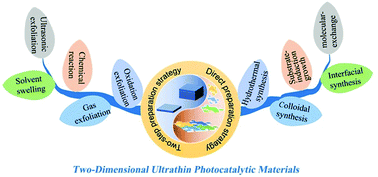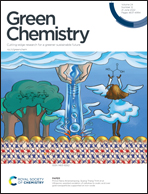Synthesis of two-dimensional ultrathin photocatalytic materials towards a more sustainable environment
Abstract
Solar-driven chemical processes are promising alternatives to conventional chemical production, especially considering the global challenges faced by humans, such as energy shortage, environmental pollution and global warming. Designing and constructing high-performance semiconductor photocatalysts with broad light absorption, matching band positions, fast carrier transfer, and sufficient active sites are highly desired but also challenging. Since bulk photocatalytic materials generally suffer from rapid carrier recombination due to their large physical dimensions, fabricating nanometer-sized photocatalytic materials is regarded as an effective strategy to shorten the carrier migration distance, thereby encouraging more carriers to be involved in photocatalytic reactions before recombination. 2D ultrathin materials are an important family of photocatalysts due to their large lateral dimension/thickness ratio. The goal of this review is to summarize the latest progress in 2D ultrathin materials from a green synthesis perspective, involving specific synthetic strategies and approaches. The discussed 2D materials include bismuth oxyhalides (BixOyXz), carbon nitrides (C3N4), conjugated covalent organic frameworks (COFs), and metal–organic frameworks (MOFs).

- This article is part of the themed collection: Green Chemistry Reviews


 Please wait while we load your content...
Please wait while we load your content...